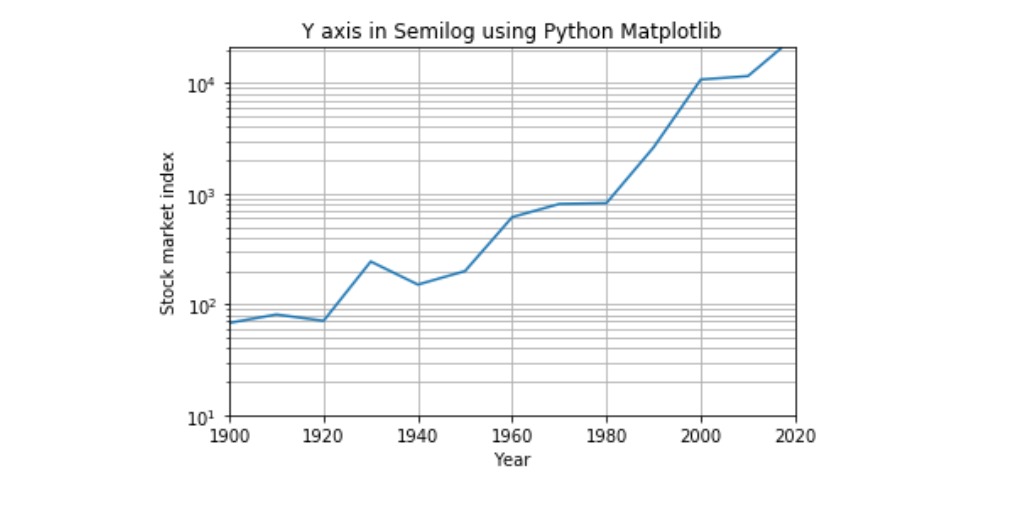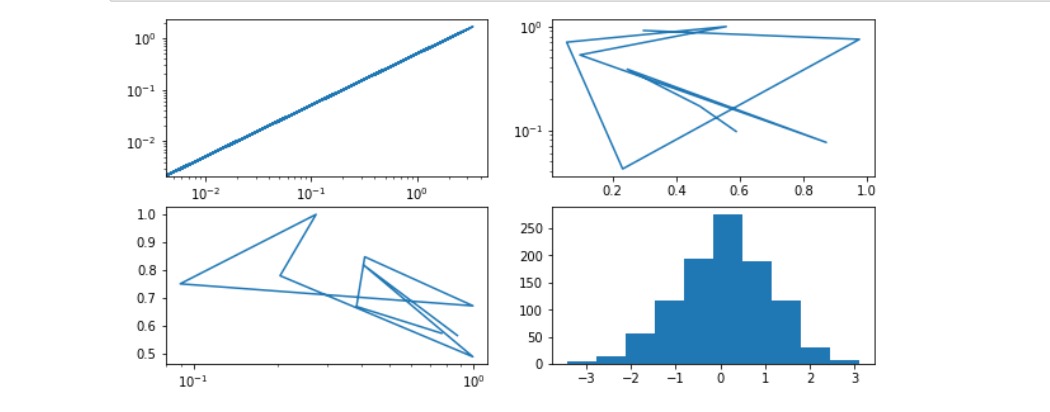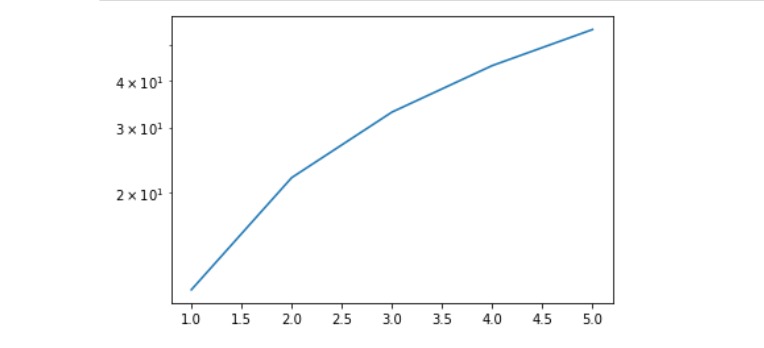Matplotlib是最流行的Python-ready軟件包,用於可視化數據。我們使用matplotlib繪製high-quality圖表,圖形和圖形。
matplotlib.pyplot.semilogy()函數
matplotlib庫的pyplot模塊中的matplotlib.pyplot.semilogy()函數用於繪製在y軸上具有對數刻度的圖。
用法: matplotlib.pyplot.semilogy(*args, **kwargs)
參數:此方法接受下麵描述的以下參數:
- basey:此參數是y對數的底,並且是可選參數,默認值為10。
- subsy:此參數是次要Y刻度的位置順序,並且是可選的。
- nonposy:此參數是y中的一個非正值,可以將其屏蔽為無效值,或裁剪為非常小的正數。
返回值:這將返回以下內容:
- 行:這將返回代表繪製數據的Line2D對象的列表。
以下示例說明了matplotlib.pyplot中的matplotlib.pyplot.semilogy()函數:
範例1:
# importing necessary libraries
import matplotlib.pyplot as plot
import numpy as np
# Year data for the semilogy plot
years = [1900, 1910, 1920, 1930, 1940, 1950,
1960, 1970, 1980, 1990, 2000, 2010,
2017]
# index data - taken at end of every
# decade - for the semilogy plot
indexValues = [68, 81, 71, 244, 151, 200, 615,
809, 824, 2633, 10787, 11577,
20656]
# Display grid
plot.grid(True, which ="both")
# Linear X axis, Logarithmic Y axis
plot.semilogy(years, indexValues )
plot.ylim([10, 21000])
plot.xlim([1900, 2020])
# Provide the title for the semilogy plot
plot.title('Y axis in Semilogy using Python Matplotlib')
# Give x axis label for the semilogy plot
plot.xlabel('Year')
# Give y axis label for the semilogy plot
plot.ylabel('Stock market index')
# Display the semilogy plot
plot.show()輸出:

範例2:
# importing necessary libraries
import matplotlib.pyplot as plt
import numpy as np
fig, ax = plt.subplots(nrows = 2,
ncols = 2,
figsize =(10, 5))
x = np.random.randn(1000)
# Plot to each different index
ax[0, 0].loglog(x, x / 2);
ax[0, 1].semilogy(np.random.random(10), np.random.random(10));
ax[1, 0].semilogx(np.random.random(10), np.random.random(10));
ax[1, 1].hist(np.random.randn(1000));輸出:

範例3:
# importing necessary libraries
import matplotlib.pyplot as plt
import numpy as np
x = [1, 2, 3, 4, 5]
y = [11, 22, 33, 44, 55]
fig, ax = plt.subplots()
ax.semilogy(x, y);輸出:

相關用法
- Python Wand function()用法及代碼示例
- Python tell()用法及代碼示例
- Python id()用法及代碼示例
- Python map()用法及代碼示例
- Python dir()用法及代碼示例
- Python cmp()用法及代碼示例
- Python int()用法及代碼示例
- Python ord()用法及代碼示例
- Python hex()用法及代碼示例
- Python now()用法及代碼示例
- Python oct()用法及代碼示例
- Python str()用法及代碼示例
- Python sum()用法及代碼示例
- Python seek()用法及代碼示例
- Python reversed()用法及代碼示例
注:本文由純淨天空篩選整理自yogesh_pandey大神的英文原創作品 matplotlib.pyplot.semilogy() function in Python。非經特殊聲明,原始代碼版權歸原作者所有,本譯文未經允許或授權,請勿轉載或複製。
